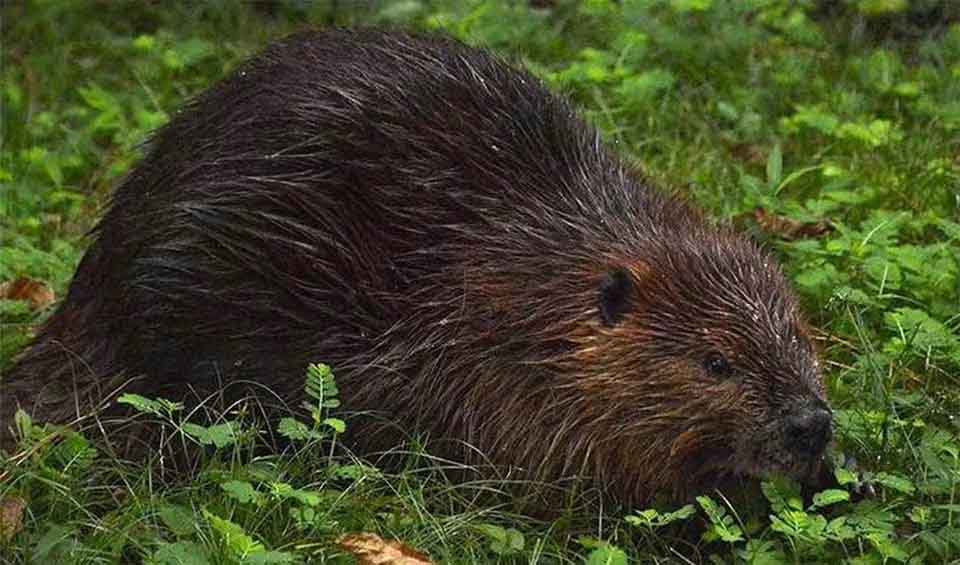Stands as one of the remaining two species of beavers in the world, alongside its Eurasian counterpart. As semi-aquatic mammals, North American beavers are well-adapted to life both on land and in water. Their distinctive physical features, such as webbed hind feet and a broad, paddle-shaped tail, are perfectly designed for swimming, allowing them to easily navigate and maneuver in aquatic environments. On land, their strong, unwebbed front paws equipped with sharp claws enable them to dig and manipulate their environment effectively.
One of the North American beaver’s most remarkable abilities is its ability to remain submerged underwater for up to 15 minutes. This skill is crucial for avoiding predators, accessing food, and constructing their remarkable aquatic structures. Beavers possess a set of transparent eyelids that function like goggles, allowing them to see underwater, and their nostrils and ears can close to keep water out during dives.
North American beavers are celebrated for their engineering prowess, unmatched in the animal kingdom. They can construct intricate lodges as family homes, providing warmth, safety, and security. These lodges are typically built using branches, mud, and rocks and are often situated in the middle of ponds or streams, accessible only through underwater entrances. This strategic location offers protection from predators such as wolves, coyotes, and bears.
In addition to lodges, beavers are famous for building dams across streams and rivers. These dams are constructed from branches, vegetation, and mud and serve multiple purposes: they slow down the flow of water, create deep water that prevents ponds from freezing to the bottom, and flood areas provide beavers with safe access to food and building materials.
The largest beaver dam ever recorded, located in Wood Buffalo National Park, Canada, measures over 850 meters (0.53 miles) in length, showcasing the extraordinary capability of these animals to alter their environment on a grand scale.
Distribution
 Argentina
Argentina Belgium
Belgium Canada
Canada Finland
Finland Germany
Germany Luxembourg
Luxembourg Mexico
Mexico Russia
Russia United States
United StatesAnything we've missed?
Help us improve this page by suggesting edits. Glory never dies!
Suggest an editGet to know me
Terrestrial / Aquatic
Altricial / Precocial
Polygamous / Monogamous
Dimorphic (size) / Monomorphic
Active: Diurnal / Nocturnal
Social behavior: Solitary / Pack / Herd / Colony
Diet: Carnivore / Herbivore / Omnivore / Piscivorous / Insectivore
Migratory: Yes / No
Domesticated: Yes / No
Dangerous: Yes / No




